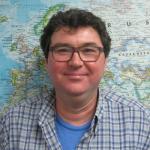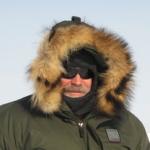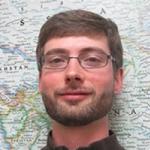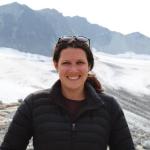The Circumpolar Active Layer Monitoring Network-CALM V (2019-2024): Long-term Observations on the Climate-Active Layer-Permafrost System
The permafrost (perennially frozen ground) regions occupy nearly a quarter of the Earth's terrestrial surface. Permafrost is experiencing large changes stemming from the unprecedented degree of environmental change being observed in the Arctic. Changes in the permafrost system have profound effects on the ecology, hydrology, geomorphology, and human occupation of cold environments. The main indicators of permafrost stability are permafrost temperature and thickness of the active-layer (layer of earth materials between the ground surface and the top of the permafrost that undergoes an annual cycle of freezing and thawing). These parameters are considered to be Essential Climatic Variables (ECVs) by the Global Climate Observing System (GCOS) and the Global Terrestrial Observing Network (GTOS). The Circumpolar Active Layer Monitoring (CALM) program represents the only coordinated program providing collection, standardization, open access, and dissemination of active-layer data world-wide. Widespread, systematic changes in the thickness of the active layer could have profound effects on the flux of greenhouse gases, on the human infrastructure in cold regions, and on landscape and hydrologic processes. It is therefore critical that observational and analytical procedures continue over decadal periods to assess trends and detect cumulative, long-term changes. This award will support the continuation of the active-layer observations conducted by the CALM program at the network of 168 sites distributed over circumpolar Arctic region. CALM program is an integral part of the Global Terrestrial Network for Permafrost.
Long-term observations of active-layer thickness and dynamics, obtained using standard measurement protocols, are the essential rationale behind the CALM project. Local site conditions and seasonal variations in climate create complex interactions that determine the magnitude of seasonal soil thaw and information about related biogeochemical processes. Long-term time series of thaw measurements at the same locations and across diverse terrain types and regions are required to identify scales of spatial variation, establish trends, and validate models. Measurement of thaw subsidence, which are critical for identifying potential threats to human infrastructure in the Arctic, is an integral part of the observation program. The objectives of the observational network stress the need for long-term active layer, ground temperature, and thaw settlement measurements, integration of data to provide the basis for comprehensive assessments of changes in active-layer and near-surface permafrost, and preparation and dissemination of data sets to assist detailed process studies, and in validating and developing of climate change, ecology, hydrology, and geocryology models. The geographical focus of the network of CALM grids and soil temperature sites is on Arctic tundra environments, where the program has made a substantial progress at building a consistent, long-term database that has been used effectively and extensively by the modeling community. Although this project is concerned only with observing stations located in the Arctic region, it is important to note that CALM is a global network incorporating observatories outside the Arctic Circle, including a rapidly developing Antarctic component (CALM-South). More than half of the sites in the CALM network are maintained and data reported on a voluntary basis. Educational and outreach activities are an integral part of the proposed research. The project will provide opportunities for field experience and educational participation at levels ranging from elementary school through postdoctoral. The circum-Arctic nature of CALM will foster extensive international collaboration between students involved in project activities. An outreach component of the project includes extensive involvement of local, predominantly indigenous population in observational program at remote Arctic sites.
This award reflects NSF's statutory mission and has been deemed worthy of support through evaluation using the Foundation's intellectual merit and broader impacts review criteria.
This collaboration between Shiklomanov (1836377, Lead, George Washington University) and Nelson (1836381, University of Delaware) continues work from NSF grant 1304555 on the Circumpolar Active Layer Monitoring (CALM) network, extending CALM activities for another five years. The CALM program is observing the response of the active layer and near-surface permafrost to climate change at multi-decade time scale. The present active-layer network contains 280 sites, 138 of which are categorized as ‘Intensive,’ with high-level instrumentation and annual monitoring. During the summers of 2019 through 2023, researchers working on this project sampled CALM grid sites in both Alaska (Fairbanks, Toolik Field Station, Prudhoe Bay, Utqiaġvik, Ivotuk, Atqasuk, and Nome) and Russia (Cherskii, Provideniya, and Yakutia). In 2020, due to travel restrictions related to COVID-19, most fieldwork was cancelled; however, remote support was conducted at Toolik Field Station and Utqiaġvik sites by local staff. In 2021, Utqiaġvik and Russia travel was cancelled. In July and August of 2022, researchers traveled to the Alaska sites to sample CALM grids, maintain/replace instrumentation, and perform outreach activities. There was no travel to Russia in 2022. In July and August of 2023, researchers will travel to Alaska to sample the CALM grids, conduct vegetation sampling at Toolik Field Station, and replace instrumentation in Utqiaġvik and Atqasuk. There will be no travel to Russia during 2023.
For work in Alaska, Battelle ARO will provide lodging, vehicle rentals, ATV rentals, helicopter and fixed-wing support, NSTC oil field training, communications equipment, bear guards, lab space, and UIC and NSB permits. EarthScope will provide DGPS equipment. In Russia, Battelle ARO will provide remote sampling support with the Northeast Science Station (NESS) in Cherskii, and the Chukotka Science Support Group (CSSG) in Chukotka. US participant travel to Russia is not authorized in 2023. All other logistics, including land use permits, will be arranged and paid for by the PI from the research grant.
Publications
Boike, J., S. Chadburn, J. Martin, S. Zwieback, I.H.J. Althuizen, N. Anselm, L. Cai, S. Coulombe, H. Lee, A.K. Liljedahl, M. Schneebeli, Y. Sjöberg, N. Smith, S.L. Smith, D.A. Streletskiy, S.M. Stuenzi, S. Westermann, and E.J. Wilcox, 2021: Standardized monitoring of permafrost thaw: a user-friendly, multiparameter protocol, Arctic Science, 8(1), https://doi.org/10.1139/as-2021-0007
Kaverin, D., G. Malkova, D. Zamolodchikov, N. Shiklomanov, A. Pastukhov, A. Novakovskiy, M. Sadurtdinov, A. Skvortsov, A. Tsarev, A. Pochikalov, S. Malitsky, and G. Kraev, 2021: Long-term active layer monitoring at CALM sites in the Russian European North, Polar Geography, 44(3):203-216, https://doi.org/10.1080/1088937X.2021.1981476
Streletskiy, D.A., A. Maslakov, G. Grosse, N.I. Shiklomanov, L. Farquharson, S. Zwieback, G. Iwahana, A. Bartsch, L. Liu, T. Strozzi, H. Lee, and M.V. Debolskiy, 2025: Thawing permafrost is subsiding in the Northern Hemisphere—review and perspectives, Environmental Research Letters, 20(1), https://doi.org/10.1088/1748-9326/ada2ff




